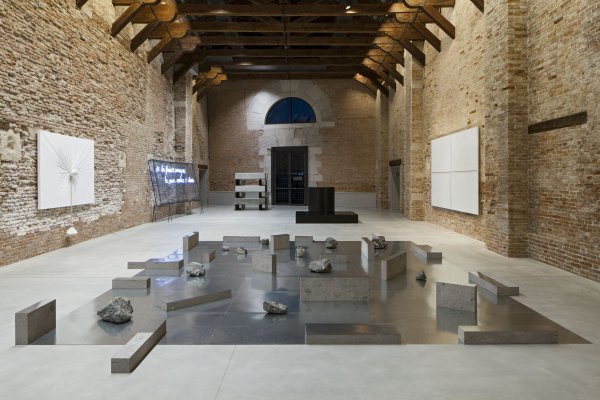Shûsaku
Arakawa
Shûsaku
Arakawa
Arakawa
Japanese, 1936 — 2010
An architect, conceptual artist and poet, Shûsaku Arakawa visually explores the processes of human thought and the structure of the senses. His deeply philosophical work is marked by a close relationship with death, caused by the injuries he suffered in World War II, expressed even in his creations that brave the themes of death and aging.
At the beginning of his career, Arakawa joined the Neo-Dada Organizers group, inspired by Western art. After the first pencil works on canvas and ink on photographs, he painted and experimented with a number of engraving media. In 1987, with his wife he established the Architectural Body Research Foundation, a group of scientific experts working on the concept of spaces.
The work of Shûsaku Arakawa was first shown by the Pinault Collection at the “Prima Materia” (“Raw Material”) exhibition at the Punta della Dogana, and earned him a number of solo shows, including at the Paris Musée d’Art Moderne (1970) and at the MoMA in New York (1974).
At the beginning of his career, Arakawa joined the Neo-Dada Organizers group, inspired by Western art. After the first pencil works on canvas and ink on photographs, he painted and experimented with a number of engraving media. In 1987, with his wife he established the Architectural Body Research Foundation, a group of scientific experts working on the concept of spaces.
The work of Shûsaku Arakawa was first shown by the Pinault Collection at the “Prima Materia” (“Raw Material”) exhibition at the Punta della Dogana, and earned him a number of solo shows, including at the Paris Musée d’Art Moderne (1970) and at the MoMA in New York (1974).




